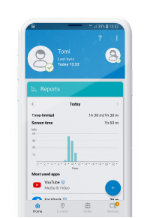Is my child being groomed? And what to do next
It is a horrible situation to find yourself in as a parent, finding out that your child has been attacked by an online predator, manipulated, and taken advantage of.
The biggest concern when it comes to 11 to 16 year olds online was them contacting people they had never met face to face before. As this survey, conducted in seven European countries in 2014 shows, almost one in three kids (29%) had experienced such a situation.
Seeing sexual images was, according to the same survey, the second greatest risk, together with hate speech. Every fifth child (20%) in 2014 reported encountering each of these – i.e. inappropriate content as well as websites where people publish hate messages that attack certain groups or individuals.
When compared to an earlier survey from 2010, conducted in 25 countries, these figures had grown in both instances. Instances of hate speech increased by 7%, and exposure to online sexual images was up by 2%.
The statistics also suggest that cyberbullying is on the rise, growing from 8% in 2010 to 12% in 2014. This means that roughly one in eight kids is exposed to some kind of psychological pressure online by their peers.
Other risks encountered in 2014 by at least one in every ten respondents in the same age group were receiving messages of a sexual nature (12%), meeting online contacts offline (13%), and seeing websites where people promote eating disorders (13%), talk about or share their experiences of taking drugs (10%), or discuss ways of physically harming or hurting themselves (11%).
Even though the list of possible problems online is long, only 17% of the children polled in 2014 reported feeling bothered or upset by something they found on the web – girls being more sensitive (21%) than boys (14%). Compared to 2010, the combined number grew by 4%.
The EU study suggests that kids in the 11 to 16 age group have come up with different strategies to protect themselves from the risks present on the Internet and social networks.
First of all, they opt for instrumental action, such as installing protective software or changing their profile settings. However, this requires a certain level of technical skill, which not all of the children questioned possessed.
A second strategy adopted by children was self-monitoring, meaning youngsters don’t share any sensitive information on their social network profiles or other online accounts. They also avoid posting intimate content and communicating with people that they don’t know personally.
A third widespread strategy is behavioural avoidance of services, applications and platforms. If the child has no profile on social networks or doesn’t install an app, there is a lower chance they will be exposed to the potential risks. A slightly less strict approach is to avoid only specific actions – such as not accepting friend requests from unknown users or ignoring their attempts to communicate.
However, there are still kids who consider these measures unnecessary or ineffective. In such cases, parents are among the most important influencers. They can talk to their children, offer advice and guidance and show them how to use technical tools, such as features in some parental control apps.


With ESET Parental Control for Android
TRY FREE FOR 30 DAYSIt is a horrible situation to find yourself in as a parent, finding out that your child has been attacked by an online predator, manipulated, and taken advantage of.
Social media, chat rooms, instant messaging, and online games: all of these offer amazing opportunities for your kids. They can talk to their friends and have fun sharing videos and playing games. At the same time, though, they make it very easy for anyone to contact your child, be it through a message, a comment under a video, or through a game.
Throughout the year, cybercriminal activity has its highs and lows. Cybercriminals often benefit from events that enable them to reach more potential victims, and turn their malicious intentions into profit. The start of a new schoolyear is one such occasion. What types of cyberthreats can you expect to encounter as your child returns to school? And how do you respond to them?